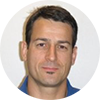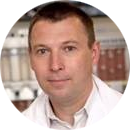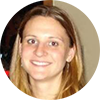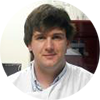Cambridge Healthtech Institute’s 4th Annual
Continuous Processing in Biopharm Manufacturing
Enabling Technologies & Creative Approaches
August 13-14, 2018
Whether you have implemented it, or are considering it in one way or another, continuous processing has become a household word among biopharma companies. Continuous manufacturing has the potential to increase the efficiency, flexibility, agility and
robustness of manufacturing by reducing the number of steps and holds, utilizing smaller equipment and facilities, improving product quality and enabling real-time release.
At the 4th Annual Continuous Processing in Biopharm Manufacturing, speakers will share their successes and challenges in implementing continuous up- and down-stream processes in their manufacturing campaigns, as well as discuss the tools
and technologies enabling real-time monitoring and control.
Final Agenda
Monday, August 13
8:00 am Short Course Registration Open (Grand Ballroom Foyer) and Morning Coffee (Break Foyer)
9:00 - 11:30 Recommended Short Course*
SC2A: Data Analytics and Data Management for the Bioprocess Lifecycle
Instructors: Christoph Herwig, PhD, Professor, Institute of Chemical Environmental and Biological Engineering, Research Division Biochemical Engineering, Vienna University of Technology
Patrick Sagmeister, PhD, CTO, Exputec GmbH
* Separate registration required.
11:30 Main Conference Registration Open (Grand Ballroom Foyer)
1:00 pm Chairperson’s Opening Remarks
Andrew Sinclair, President & Founder, Biopharm Services Ltd.
1:10 KEYNOTE PRESENTATION: Continuous Chromatography and Process Integration for Biotherapeutics
 Thomas Mueller-Spaeth, PhD, Senior Scientist, Institute for Chemical and Bioengineering,
ETH Zurich
Thomas Mueller-Spaeth, PhD, Senior Scientist, Institute for Chemical and Bioengineering,
ETH Zurich
Continuous chromatography is a major facilitator of cost and process time savings in biotherapeutics production. Further savings and product quality improvements result from integration with continuous upstream and minimization of hold steps.
1:45 Optimized Process Control Using Biocapacitance Probes for Large Scale Continuous Manufacturing
 Jacob Jensen, Senior Manager, Manufacturing Sciences, Program Management, Biogen Denmark
Jacob Jensen, Senior Manager, Manufacturing Sciences, Program Management, Biogen Denmark
Optimizing process controls to maximize your manufacturing reliability is significantly increased when applying PAT tools to your process. Capacitance and Raman are great examples of inline control which can serve the purpose of tight process
control enabling consistent product quality output.
2:15 Development of Continuous Capture Process of Antibodies Using Different Protein A Resins: Loading Strategy, Process Design and Other Considerations
 Xuezhen Connie Kang, PhD, Principal Scientist, Continuous Manufacturing Skill Center, Sanofi
Xuezhen Connie Kang, PhD, Principal Scientist, Continuous Manufacturing Skill Center, Sanofi
Sanofi is currently developing an integrated and continuous bio-manufacturing (ICB) platform for the universal production of protein therapeutics (antibodies, enzymes, etc.). This presentation will focus on continuous capture of antibodies on
the Protein A column. Different resins with a variety of cost, binding capacity, and flow characteristics are evaluated under a series of operation conditions. The data were used to develop continuous capture process of antibody therapeutics.
Continuous chromatography process design strategies are discussed.
2:45 Refreshment Break (Foyer)
3:15 Synthetic Peptide Ligands for Improved Clearance of CHO Host Cell Protein
 Stefano Menegatti, PhD, Professor, Chemical and Biomolecular Engineering, North Carolina State
University
Stefano Menegatti, PhD, Professor, Chemical and Biomolecular Engineering, North Carolina State
University
Traditional HCP clearance relies on a combination of bind-and-elute or flow-through steps with broad specificity. While effective at attaining high MAb purity, this approach does not address “difficult” species such as MAb-bound or
enzymatically active HCPs. To address these issues, we have developed HCP-binding peptide ligands for use as either pre-Protein A or polishing steps to enhance HCP removal in flow-through mode.
 3:45 PAT Systems: Leveraging Historical Batch Process Data to Stimulate Continuous Process Development
3:45 PAT Systems: Leveraging Historical Batch Process Data to Stimulate Continuous Process Development
 Nicholas Trunfio, PhD, Senior Research Data Scientist, Sartorius Stedim Data Analytics
Nicholas Trunfio, PhD, Senior Research Data Scientist, Sartorius Stedim Data Analytics
Multivariate calibration models facilitate the real-time monitoring of cell culture nutrients and metabolic byproducts, but they require robust training data sets to be accurate and reproducible. This work demonstrates that when the right preprocessing
techniques are applied to historical batch data, the resulting models can be used to estimate the same parameters in continuous cell culture processes while more relevant training data sets are acquired.
4:15 FEATURED PRESENTATION: Regulatory Research to Support PAT Implementation in in Continuous Biomanufacturing
 Erica J. Fratz-Berilla, PhD, Staff Fellow, Office of Biotechnology Products, US Food and Drug
Administration
Erica J. Fratz-Berilla, PhD, Staff Fellow, Office of Biotechnology Products, US Food and Drug
Administration
The Guidance for Industry on PAT drafted in 2004 has been one of the most influential guidances in bioprocessing as it has offered a context on which to build innovative pharmaceutical development, manufacturing, and quality assurance. Regulatory
research is essential to support regulatory decisions, policy development, FDA guidance documents, and reviewer training. Several research examples in support of PAT implementation in upstream continuous biomanufacturing will be presented.
4:45 Breakout Discussions
This session provides the opportunity to discuss a focused topic with peers from around the world in an open, collegial setting. Select from the list of topics available and join the moderated discussion to share ideas, gain insights, establish
collaborations or commiserate about persistent challenges. Then continue the discussion as you head into the lively exhibit hall for information about the latest technologies.
Regulations & Continuous Manufacturing
Moderator: Robert Dream, Managing Director, HDR Company
- No specific regulations or guidance for continuous manufacturing, other than the definition of “lot”
- Continuous manufacturing consistent with FDA’s QbD efforts
- Potential to improve assurance of quality and consistency of drugs
- Enables quality to be directly built into the process design
Bioprocess Economics, Understanding the Impact of Process and Technology Choices
Moderator: Andrew Sinclair, President & Founder, Biopharm Services Ltd.
- Impact of single use technology in commercial greenfield manufacturing
- What is single use role within a legacy stainless steel environment
- What role does perfusion play compared to fed batch
- Where how does continuous processing add value
- Deconstructing the cost of cell therapies
Challenge and Potential Solutions for Continuous Processing
Moderator: Ji Zheng, PhD, Associate Director, Biologics Development and Manufacturing, Celgene
- Current status of Industry on continuous processes and next generation continuous processing
- Drivers of the continuous process
- Intensified vs continuous (pros/cons)
- Challenges for continuous downstream processing and virus clearance study
- Challenges in scale up / implementation of continuous manufacturing
- Control sampling plan for continuous processing
- Perfusion can improve molecules quality attributes and How to link long perfusion processes to the development of a DSP
- PAT role for continuous process
5:30 Grand Opening Reception in the Exhibit Hall with Poster Viewing (Grand Ballroom)
7:00 End of Day
Tuesday, August 14
7:30 am Registration Open and Morning Coffee (Grand Ballroom Foyer)
7:55 Chairperson’s Remarks
Stefano Menegatti, PhD, Professor, Chemical and Biomolecular Engineering, North Carolina State University
8:00 FEATURED PRESENTATION: Innovative Manufacturing Strategies - What Are the Economic Drivers?
 Andrew Sinclair, President & Founder, Biopharm Services Ltd.
Andrew Sinclair, President & Founder, Biopharm Services Ltd.
In this talk, we use advanced whole bioprocess models to understand the drivers and impact of these different modalities. The talk will explore upstream approaches such as concentrated N-1 seed, perfusion and concentrated fed batch, and
in the downstream arena, straight through processing, the opportunities for continuous (a single operation vs. the whole process) and the potential for new approaches such as membrane technology. The outcomes of modelling will provide
insights into the benefits and the issues that need to be addressed for a successful financial outcome.
8:30 Building a Fully Integrated Continuous Bioprocessing cGMP Plant: Promises It Holds and Lessons Learned from It
 Samir Varma, General Manager, Head of Manufacturing, Enzene Biosciences
Samir Varma, General Manager, Head of Manufacturing, Enzene Biosciences
Connecting the perfusion bioreactor to the continuous chromatography system creates a continuous flow of drug substance and promises to reduce Capex and COGs. Automation and PAT tools are essential. Enzene Biosciences is building a cGMP
plant that would have a fully integrated continuous bioprocess. We have already completed a proof-of-concept studies in pilot scale (50L). In this talk, I will share our experience of this project with the industry.
9:00 Design Principles and Performance Data of an Integrated Continuous Antibody Downstream Process
 Martin Poggel, PhD, Manager, Biotech Projects, Bayer AG
Martin Poggel, PhD, Manager, Biotech Projects, Bayer AG
The envisioned production concept for therapeutic proteins relies on continuous processing in combination with a modular, single use and closed processing design. Following these principle rules the setup will contribute to a higher degree
in flexibility and capacity in comparison to a standard batch-wise operated facility. The presented concept is able to handle the demand stretch in clinical and commercial manufacturing from a few kg to large quantities in the X00
kg per year amount at constant product quality.
 9:30 Virus Clearance in Continuous Multi Column Chromatography
9:30 Virus Clearance in Continuous Multi Column Chromatography
 Mark Schofield, Senior Research & Development Manager, Pall Biotech
Mark Schofield, Senior Research & Development Manager, Pall Biotech
Continuous bioprocessing is increasingly seen as a means to decrease the cost and increase the quality of biotherapeutics. A key regulatory requirement is the demonstration of virus safety. What impact does switching to continuous chromatography
have on the virus clearance of the Protein A step?
9:45 Coffee Break in the Exhibit Hall with Poster Viewing (Grand Ballroom)
10:30 Cell-Controlled Perfusion and Its Applicability to Hybrid Perfusion Fed-Batch Processes
 Meredith Curran, MSc, Scientist, Culture Process Development, Pfizer
Meredith Curran, MSc, Scientist, Culture Process Development, Pfizer
A method by which cells effectively control their own rate of perfusion to meet optimal nutritional requirements while controlling lactate accumulation has been applied to the production process development of a monoclonal antibody. By
utilizing the cell-controlled perfusion method for a short duration, followed by conventional fed-batch operation with highly concentrated feeds, significant improvements in overall productivity were achieved.
11:00 Rapid Conversion of a Low Productivity Fed Batch to a High Productivity Perfusion Process to Support Fully Continuous Manufacturing
William Nicholas Napoli, Scientist, Bioprocess Technology and Expression, Bioprocess Development, Merck & Co., Inc.
11:30 Next Generation Biopharmaceutical Downstream Process - An EU Horizon 2020 Funded Research and Innovation Programme
Michael W. Phillips, PhD, Director, Next Generation Bioprocessing R&D, MilliporeSigma
NextBioPharmDSP is an EU funded research program focused on implementing a fully integrated, continuous downstream manufacturing platform that leverages single-use technologies. Evaluation and optimization of various continuous harvest,
capture, and polishing technologies were conducted at small-scale, with final selection based on a holistic process to meet purification and yield targets while minimizing overall economics. Leveraging advanced analytical tools at
various points within the process, pilot-scale proof-of-concept trials of the integrated continuous process were completed.
 12:00 pm Developing a New Protein A Resin Toolbox to Increase Commercial Productivity
12:00 pm Developing a New Protein A Resin Toolbox to Increase Commercial Productivity
 Patrick Gilbert, PhD, Manager, Research & Development, Agarose, Purolite Life Sciences
Patrick Gilbert, PhD, Manager, Research & Development, Agarose, Purolite Life Sciences
A new methodology of resin manufacturing has been utilised to make a high capacity protein A resin with enhanced alkaline stability. Advantages of the new production method will be discussed as well as commercial economics at process scale.
 12:15
Paving the Way to Integrated Continuous Bioprocessing: In-line PAT for Steady-State Purification with the CCTC Platform
12:15
Paving the Way to Integrated Continuous Bioprocessing: In-line PAT for Steady-State Purification with the CCTC Platform
Dmitriy Fedorenko, Associate Director, Process Sciences, ChromaTan
CCTC
is a column-free purification platform with unique opportunities for PAT. CCTC’s steady-state operation is a natural fit for simplified PAT and integrated processing. New data on CCTC integration of proA with polishing
steps using real-time PAT for mAb yield and aggregate shows system productivities > 100 g /L /hr.
12:30 Luncheon Presentation: Maximizing Process Intensification and Cost-Savings in Next-Generation Monoclonal Antibody Production
Michael Felo, Director, Downstream Process Integration, MilliporeSigma
1:15 Dessert Refreshment Break in the Exhibit Hall with Poster Viewing (Grand Ballroom)
1:55 Chairperson’s Remarks
Samir Varma, General Manager, Head, Manufacturing, Enzene Biosciences
2:00 Continuous Processes for Glyco-Optimized or Difficult-to-Express Proteins
 Vicky Goralczyk, PhD, Scientist USP, Glycotope GmbH
Vicky Goralczyk, PhD, Scientist USP, Glycotope GmbH
Even though productivity for CHO systems has remarkedly improved over the last years, some biopharmaceuticals like bispecific constructs or complex glycoproteins remain very challenging. With fed-batch being often the cultivation system
of choice, issues of low quality or reduced productivity may arise. With Glycotope’s more than a decade of perfusion expertise, I present case study data from upstream perfusion development for the human GlycoExpress cell
line GEX, which overcomes productivity and product quality limitations.
2:30 Development of a Perfusion Cell Culture System for the Manufacturing of Allogenic Exosome-Based Biotherapeutics
 Andrew Grube, Senior Research Associate, Upstream Process Development, Codiak Biosciences
Andrew Grube, Senior Research Associate, Upstream Process Development, Codiak Biosciences
As efforts accelerate to translate exosome biology into new medicines, clear technology gaps have emerged between the current state of the art for producing these vesicles, and the capabilities necessary to support large scale clinical
and commercial manufacturing. To this end, Codiak BioSciences has leveraged cutting edge bioprocessing methods developed through decades of recombinant protein manufacturing to create a scalable exosome production platform based
on an immortalized human cell line growing in suspension and CD media.
3:00 Control of Protein Glycosylation in a Continuous Bioreactor Process
Rustin Shenkman, PhD, Senior Development Engineer, BDS Process Development, Shire
 3:30 Refreshment
Break in the Exhibit Hall with 1st Session Poster Winner Announced (Grand Ballroom)
3:30 Refreshment
Break in the Exhibit Hall with 1st Session Poster Winner Announced (Grand Ballroom)
4:15 Continuous Chromatography for Oncolytic Virus Purification
 Ricardo J.S. Silva, PhD, Scientist, Animal Cell Technology Unit, iBET Instituto de Biologia
Experimental Tecnologica
Ricardo J.S. Silva, PhD, Scientist, Animal Cell Technology Unit, iBET Instituto de Biologia
Experimental Tecnologica
Oncolytic virus manufacturing scale can range from 5L in research and development up to 50L for clinical studies and reach around 500L in commercial scale. Continuous chromatography offers a transversal solution to match the scale
of the manufacturing plant to any of the throughputs, easing technology transfer and lowering investment costs.
4:45 Continuous Downstream Processing of Non-mAb Biologics
Ji Zheng, PhD, Associate Director, Biologics Development and Manufacturing, Celgene
The increasing production volumes of biomolecules and a rising cost pressure from the market has engendered a strong interest in the downstream chromatographic purification steps. Continuous processing could potentially reduce
operational costs and has been applied in industries for monoclonal antibody (mAb) manufacturing. However, continuous downstream processing for non-mAb biologics is still challenging. In this presentation, the strategies and
technologies that can be implemented into continuous downstream processing for non-mAb biologics will be discussed.
5:15 End of Conference
6:00 - 8:30 Recommended Dinner Short Course*
SC8B: Integrated Continuous Biomanufacturing – An Implementation Approach
Instructor: Robert Dream, PE, CPIP, Managing Director, HDR Company Ltd.
* Separate registration required.